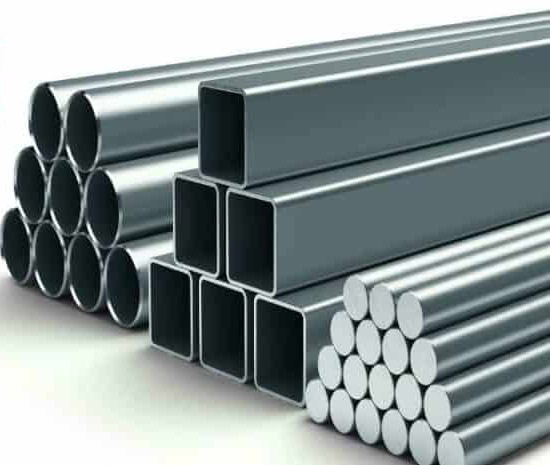There are countless variations of stainless steel that you could potentially use for a custom wire basket or tray. Each formulation of stainless steel alloy has its own unique properties for tensile strength, melting point, oxidation resistance, and corrosion resistance.
Picking the right grade of stainless steel requires knowing what your options are. To help you better understand your choices, here’s a quick explanation of the most common types of stainless steel and their properties:
The Three Main Categories of Stainless Steel
While there are thousands of different alloys of stainless steel, they can all be divided into three broad categories:
- Austenitic Stainless Steels. These are the most frequently used types of stainless steels. Austenitic stainless steels tend to have a high chromium content compared to other steel alloys, giving them a higher resistance to corrosion. Another common characteristic of austenitic stainless steel alloys is that they tend to be non-magnetic—though they may become magnetic after cold working.
- Ferritic Stainless Steels. The second most common form of stainless steel after austenitic alloys. As the name implies, ferritic stainless steel is magnetic. These alloys can be hardened through cold working. They also tend to be less expensive because of their reduced nickel content.
- Martensitic Stainless Steels. The least common category of stainless steel alloy. Their corrosion resistance tends to be lower than either ferritic or austenitic alloys, but they have a high hardness. Martensitic stainless steel alloys are often ideal for applications requiring extraordinarily high tensile strength and impact resistance. When said applications also require corrosion resistance, these alloys may be used with a protective polymer coating.
There are numerous grades of stainless steel within each category—here are the breakdowns of the most common varieties of each:
Common Types of Austenitic Stainless Steels
Grade 304 Stainless Steel
The most common variety of stainless steel, and one that is frequently used in Marlin Steel’s custom wire basket designs because of its versatility. Even among steel alloys, grade 304 stainless steel is noteworthy for its high tensile strength—roughly 621 MPa (90 ksi). Like most stainless steels, grade 304 has a high maximum operating temperature (about 870˚C). This combination of high tensile strength, temperature resistance, and corrosion resistance makes grade 304 stainless steel ideal for a wide variety of applications.
Grade 316 Stainless Steel
Another common variety of austenitic stainless steel, grade 316 stainless has a high tensile strength of 579 MPa (84 ksi) and a maximum use temperature of around 800˚C (1,472˚F). While having a lower tensile strength and temperature tolerance than grade 304 stainless steel, grade 316 stainless has a better resistance to chlorides (like salt) than 304 alloy does. This makes it a preferred choice for any application involving exposure to salt or other chlorides.
Ferritic Stainless Steels
Grade 430 Stainless Steel
While not as strong as either of the austenitic alloys highlighted above, grade 430 stainless steel does have an especially good resistance against nitric acid. Although the tensile strength of 450 MPa (65 ksi) is lower than the austenitic stainless steels, it’s still more than strong enough for many heavy-duty applications.
Grade 434 Stainless Steel
The stronger alternative to grade 430 stainless, 434 stainless steel has a tensile strength of 540 MPa (78 ksi) and a maximum operating temperature of 815˚C (1,499˚F). This makes grade 434 stainless steel slightly better for high-temperature applications than 316 stainless, while being tougher than grade 430 stainless. Grade 434 stainless also has excellent pitting resistance compared to 430 grade stainless steel.
Martensitic Stainless Steel
Grade 420 Stainless Steel
If annealed, grade 420 stainless steel has a tensile strength of around 586 MPa (85 ksi). When hardened and stress relieved, this material’s tensile strength jumps to roughly 1,586 MPa (230 ksi). While not as chemically resistant as the austenitic and ferritic stainless steels mentioned above, grade 420 stainless steel does have good resistance to mild acids, water, some alkalis, and food compounds—which is why it is often used for cutlery. When tensile strength and impact resistance are the primary concerns for an application, 420 stainless is a top choice.
The Table of Stainless Steel Alloys
Here’s a quick table to break down the characteristics of the alloys listed above:
|
Alloy |
Tensile Strength |
Maximum Use Temp |
Melting Point |
Resistance |
|
Austenitic Alloys |
||||
|
Grade 304 Stainless |
621 MPa (90 ksi) |
870˚C (1,679˚F) |
1,399 – 1,454˚C (2,550 – 2,650˚F) |
Good overall resistance to corrosives |
|
Grade 316 Stainless |
579 MPa (84 ksi) |
~800˚C (1,472˚F) |
1,371 – 1,399˚C (2,500 – 2,550˚F) |
Excellent chloride resistance |
|
Ferritic Alloys |
||||
|
Grade 430 Stainless |
450 MPa (65 ksi) |
815˚C (1,499˚F) |
1,425 – 1,510˚C (2,597 – 2750˚F) |
Good nitric acid resistance |
|
Grade 434 Stainless |
540 MPa (78 ksi) |
815˚C (1,499˚F) |
1,426 – 1,510˚C (2,600 – 2750˚F) |
Superior pitting resistance |
|
Martensitic Alloy |
||||
|
Grade 420 |
586 MPa (85 ksi) when annealed 1,586 MPa (230 ksi) when hardened and stress relieved |
650˚C (1,202˚F) |
1,454 – 1,510˚C (2,649 – 2,750˚F) |
Resistant to mild acids, alkalis, and water when hardened |

